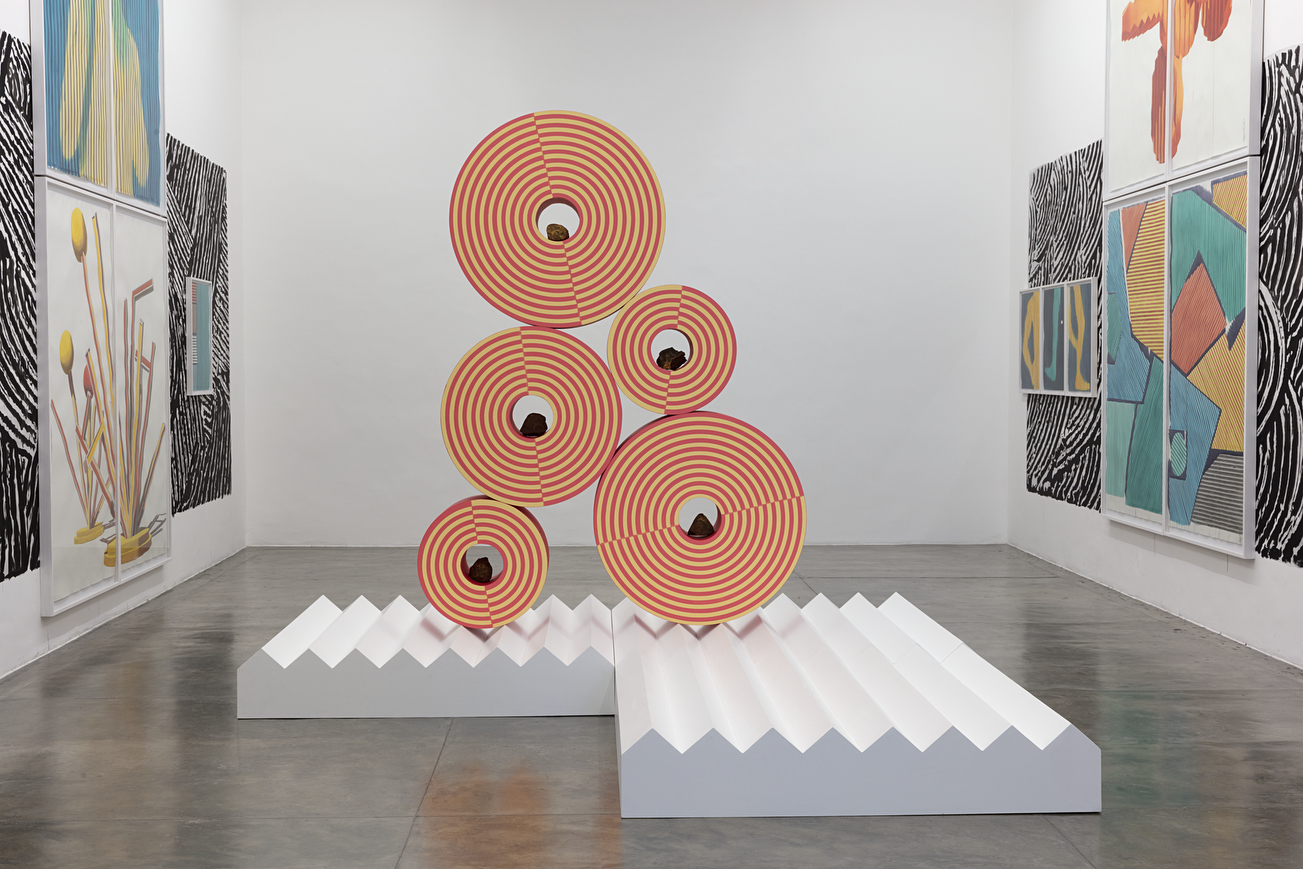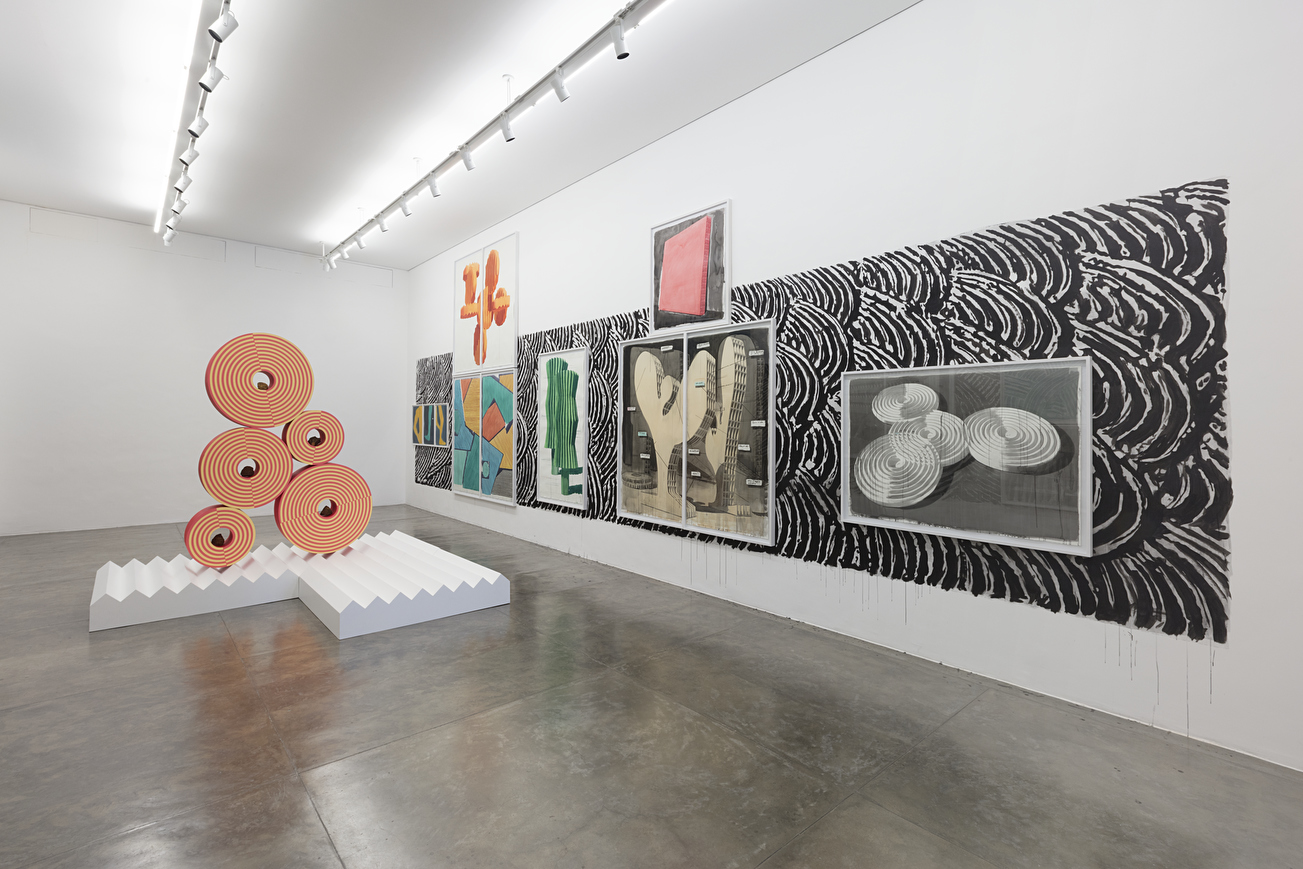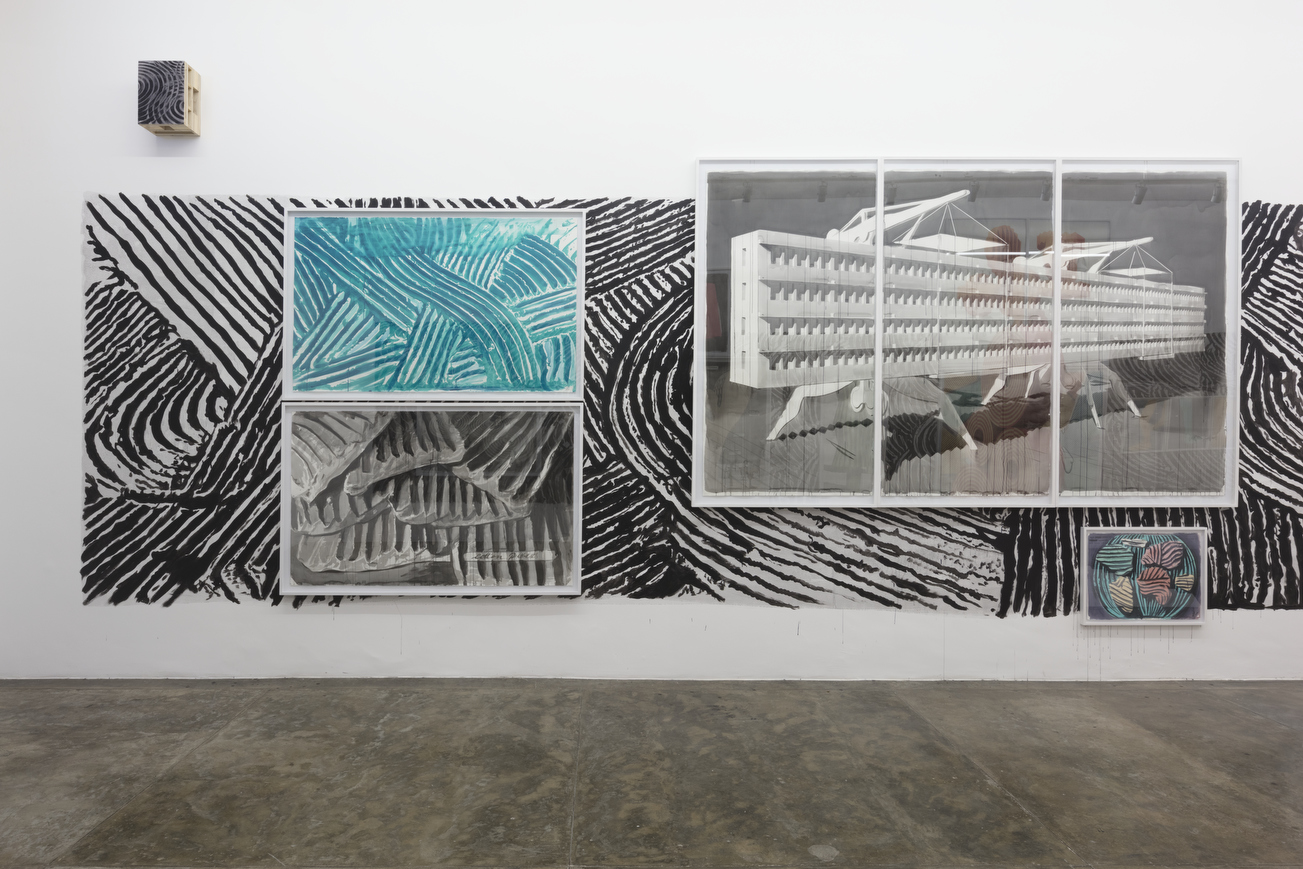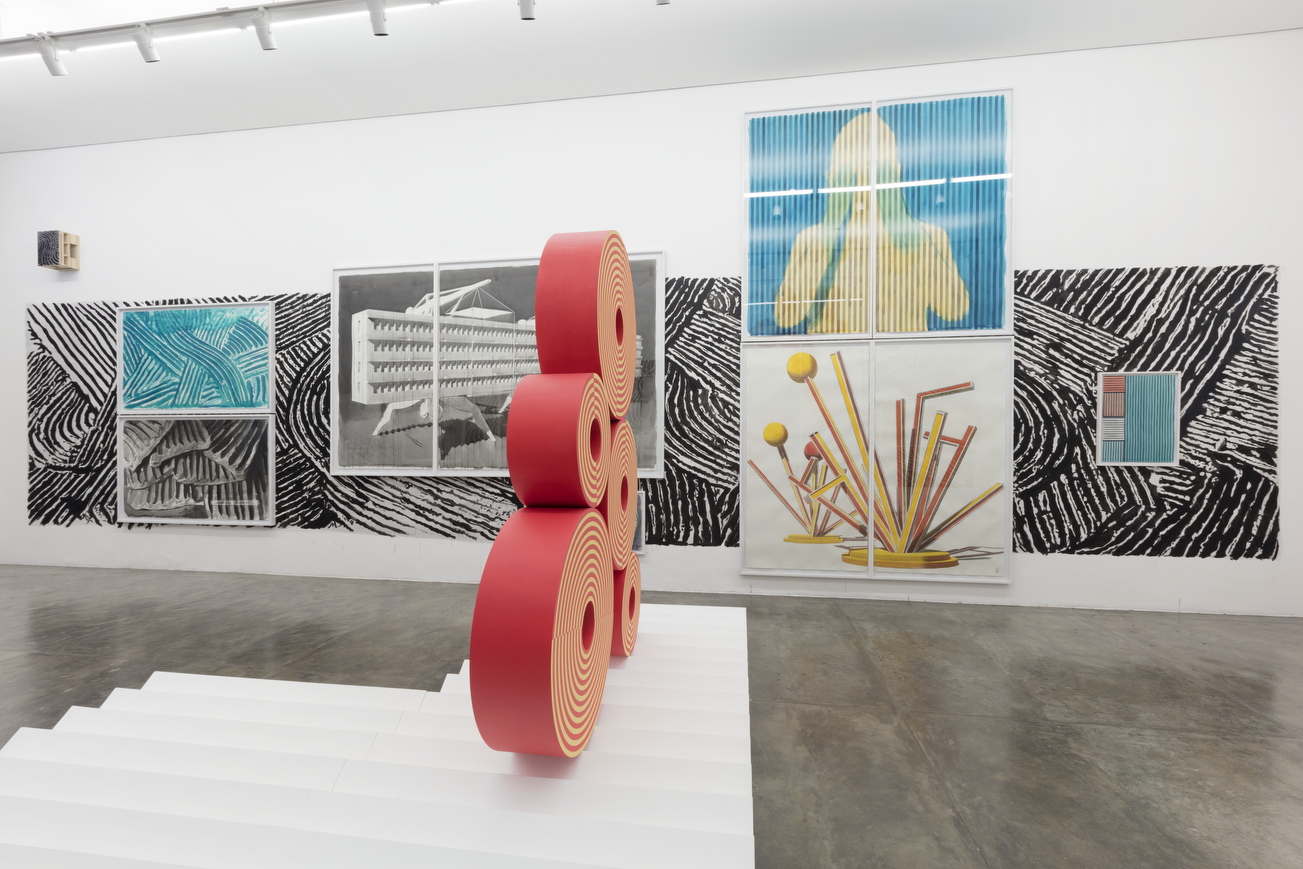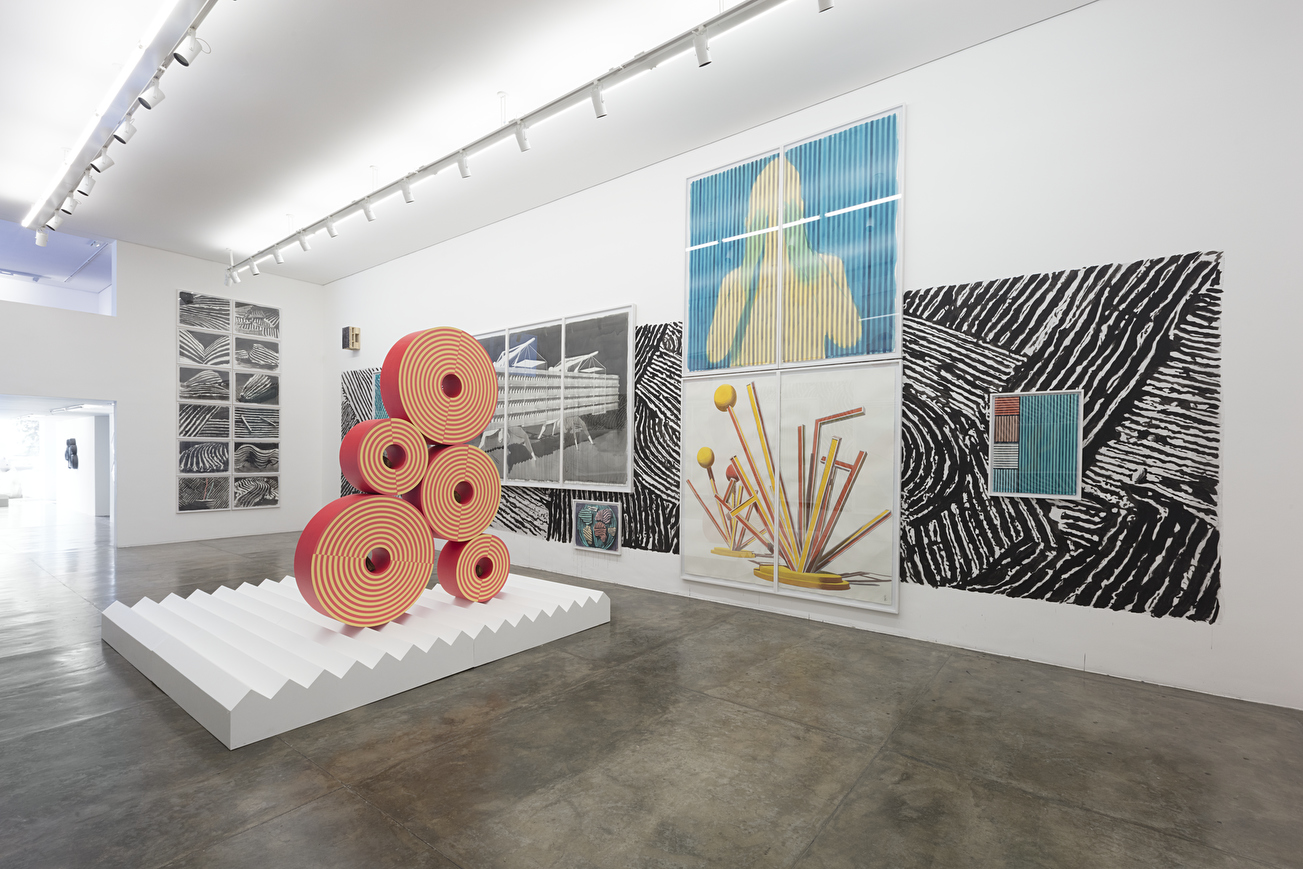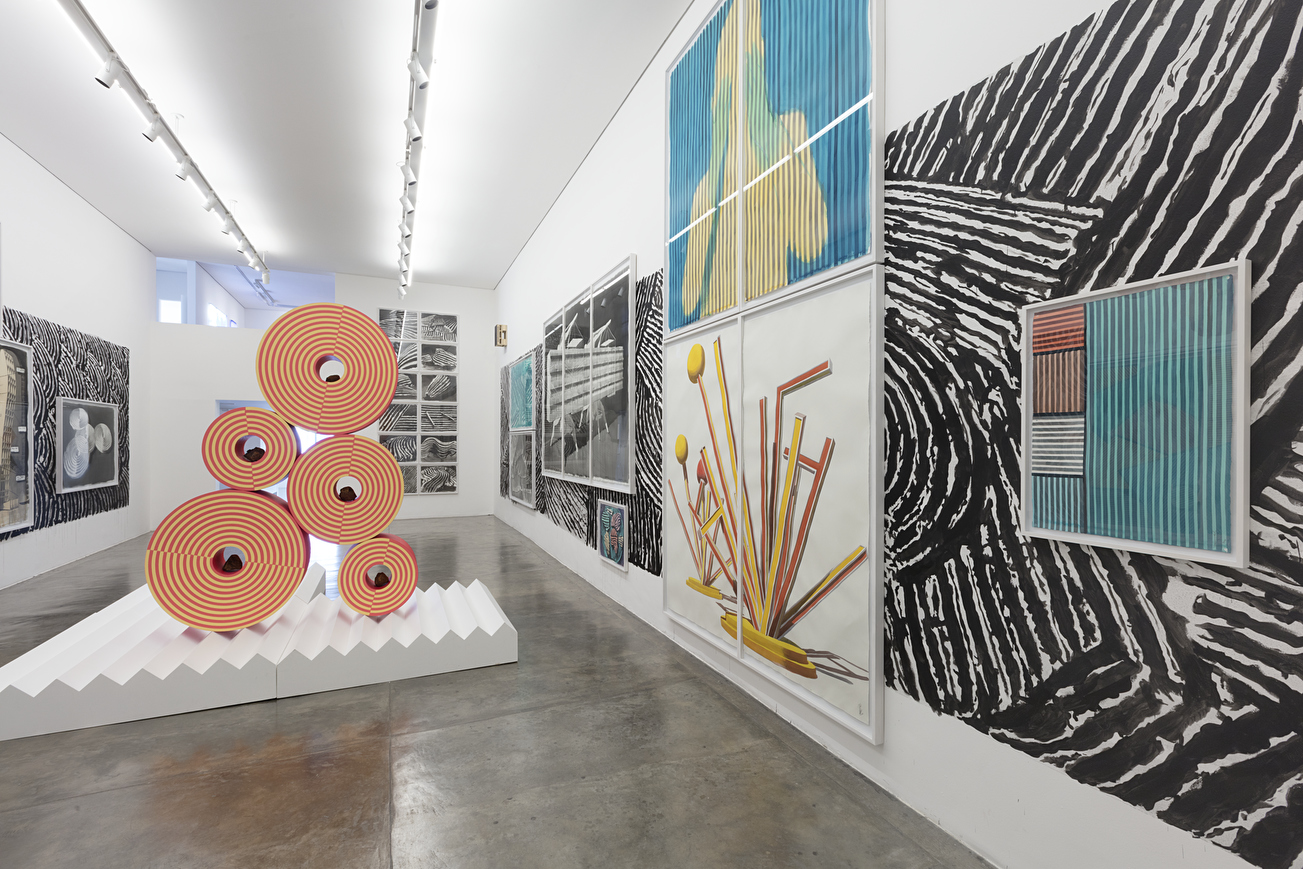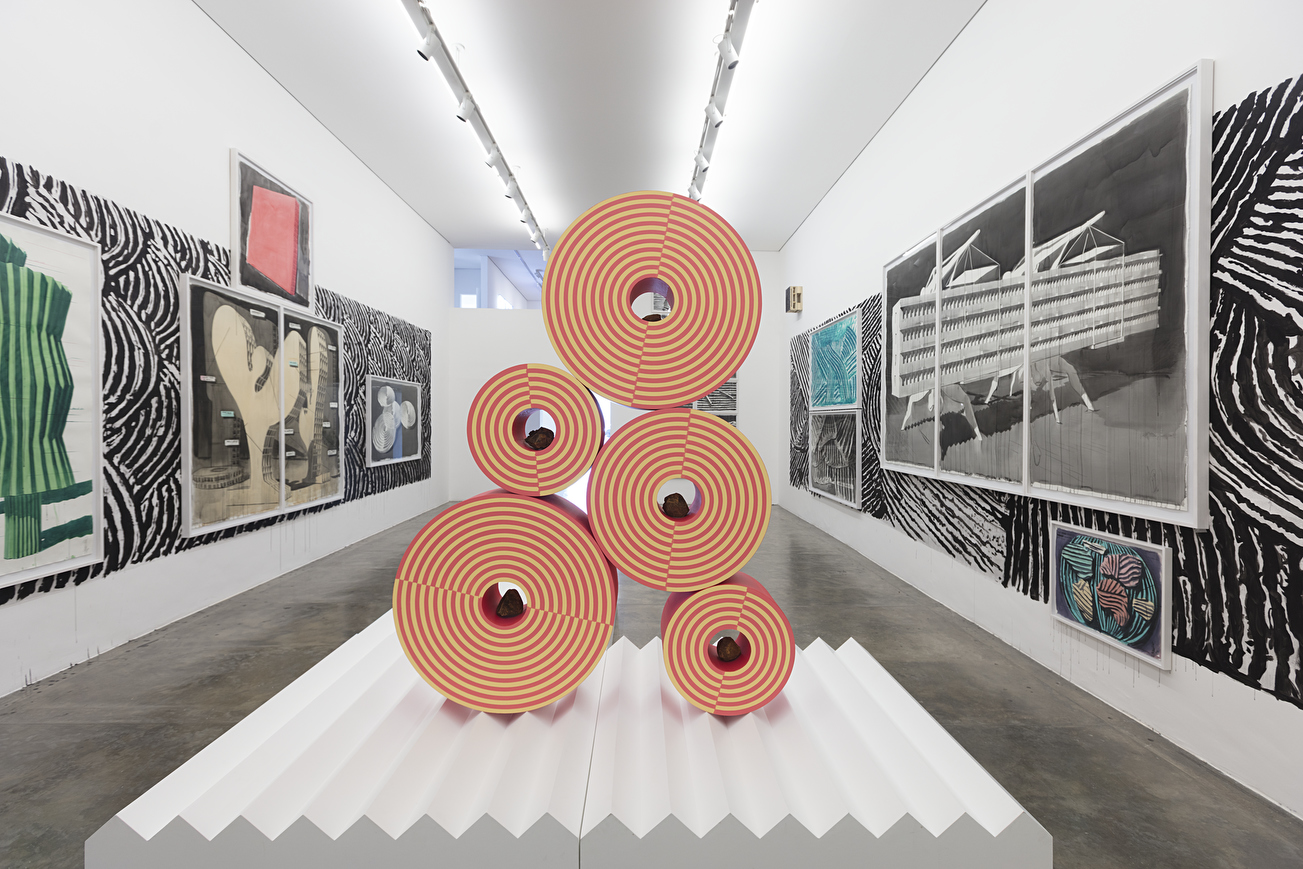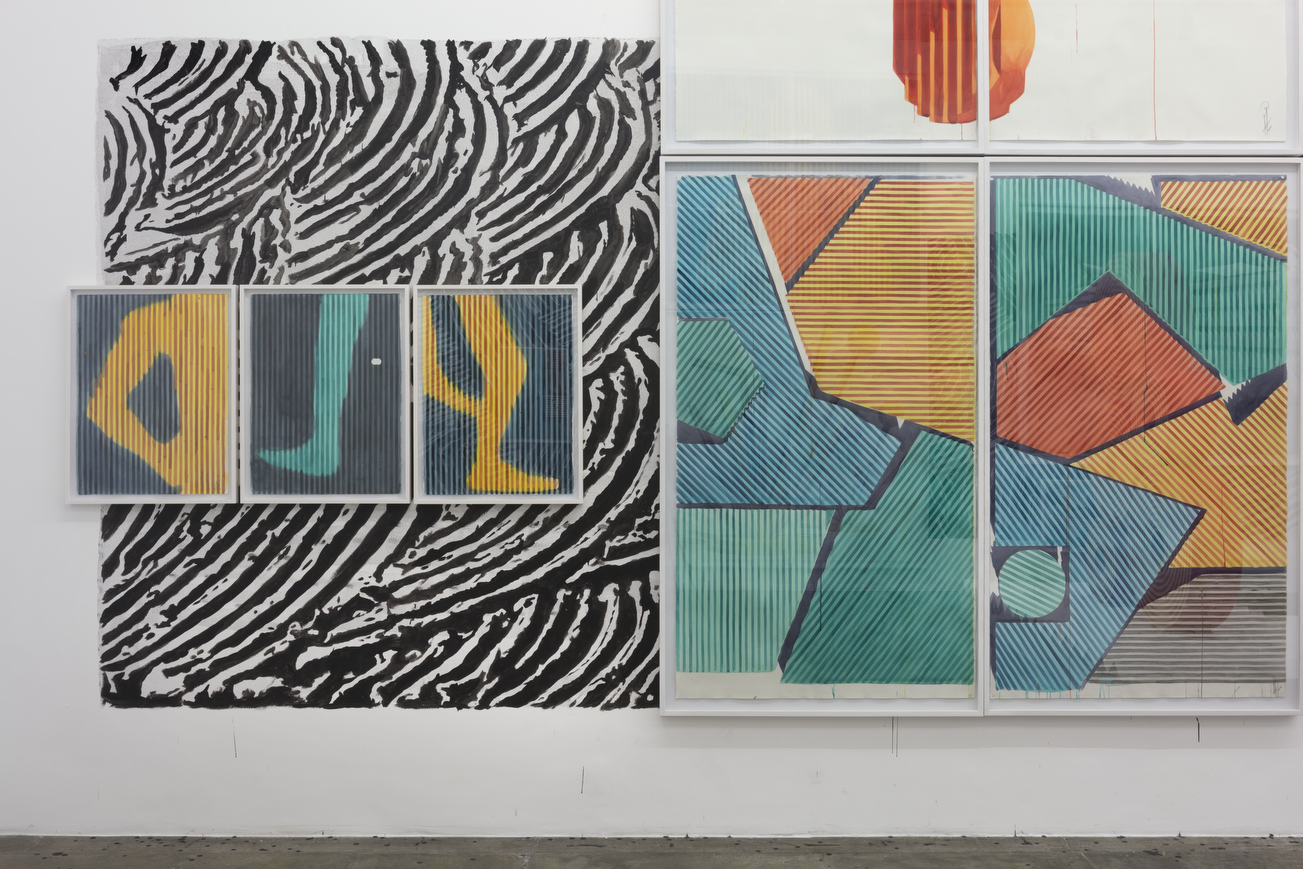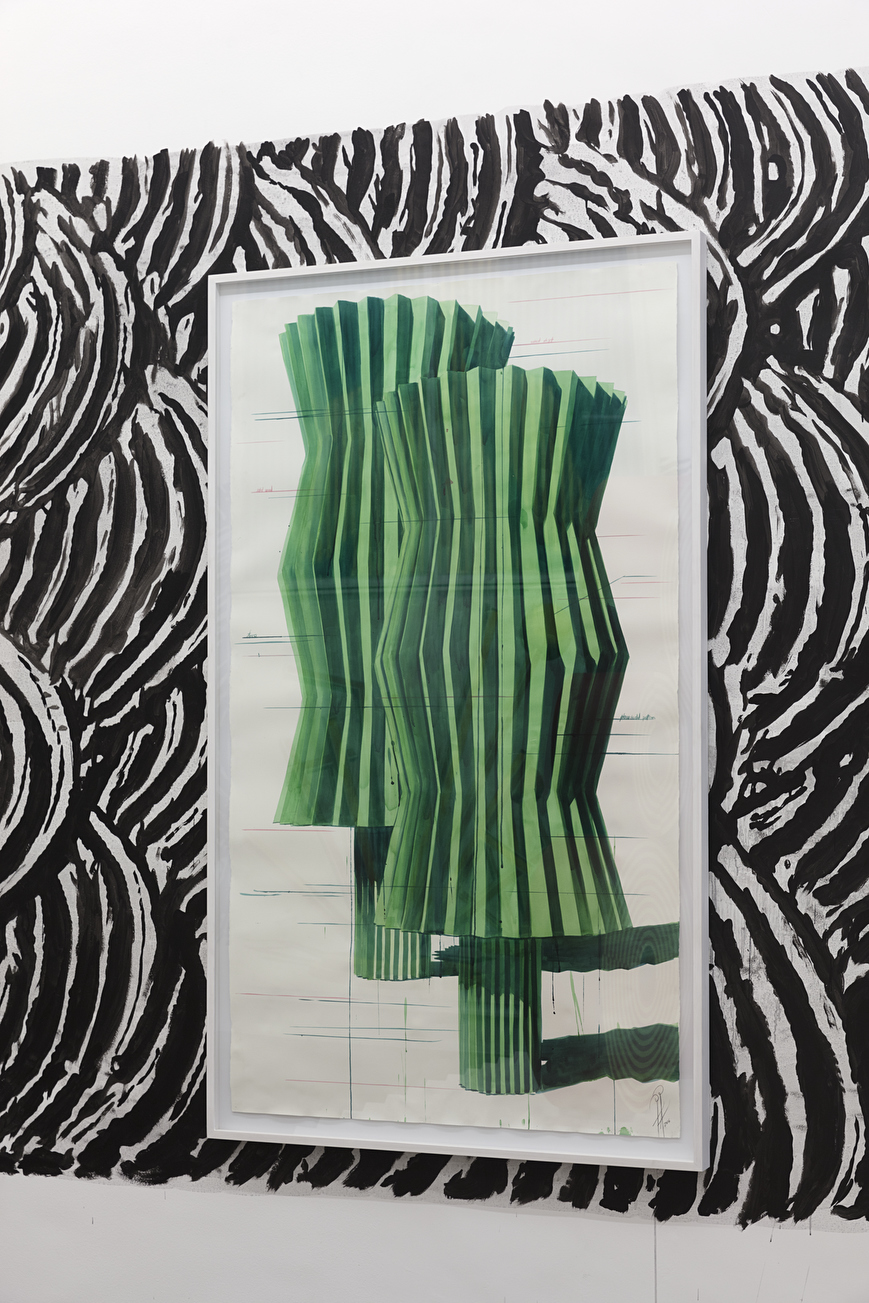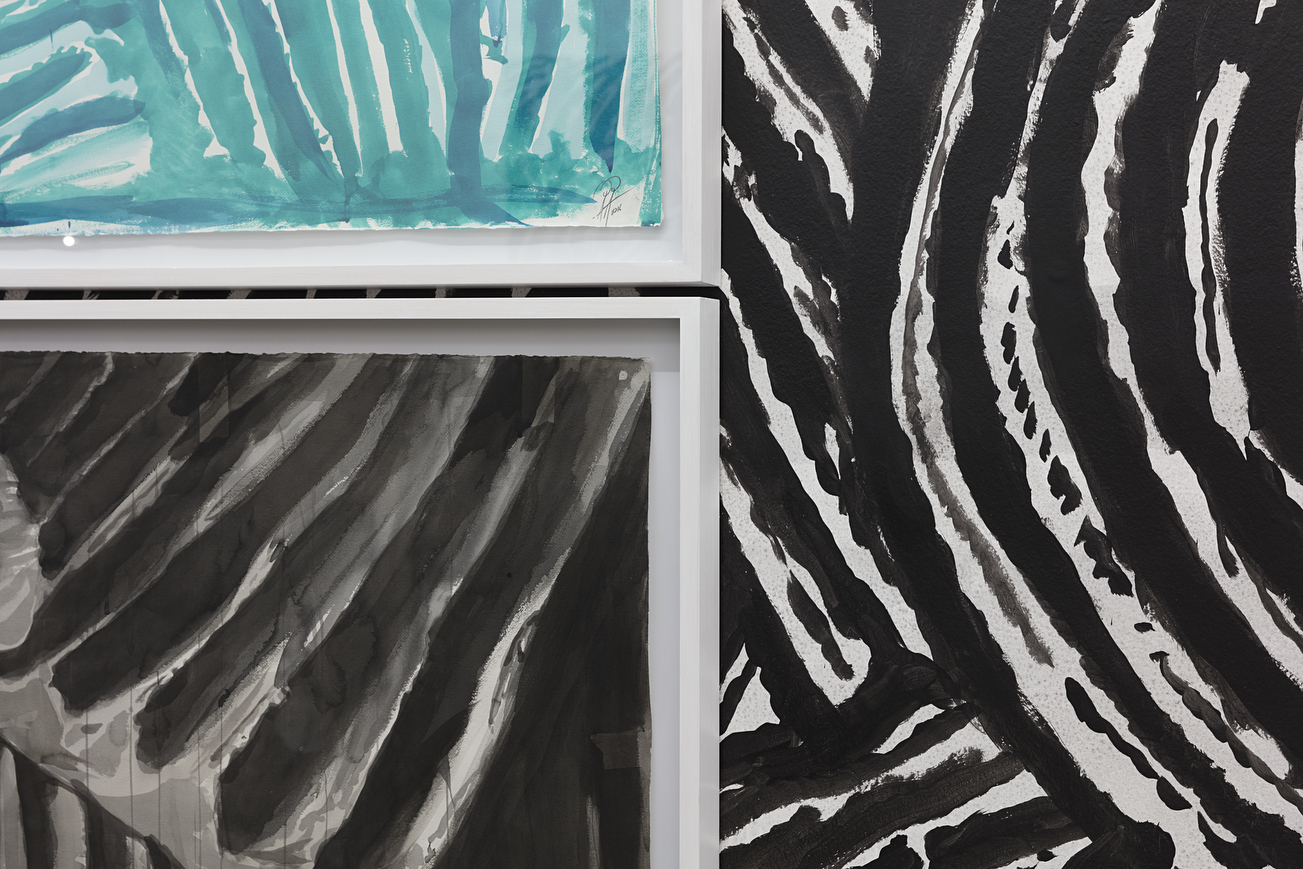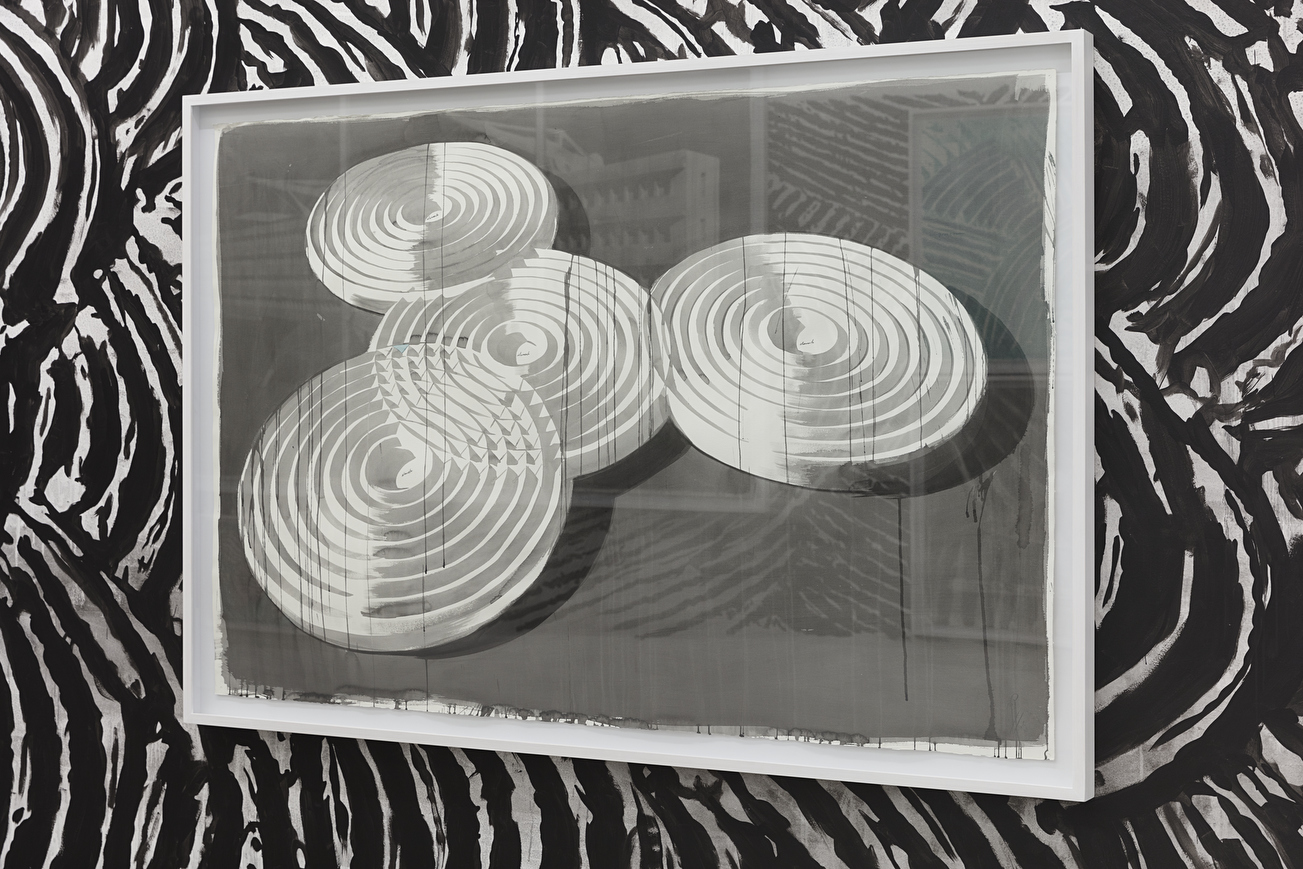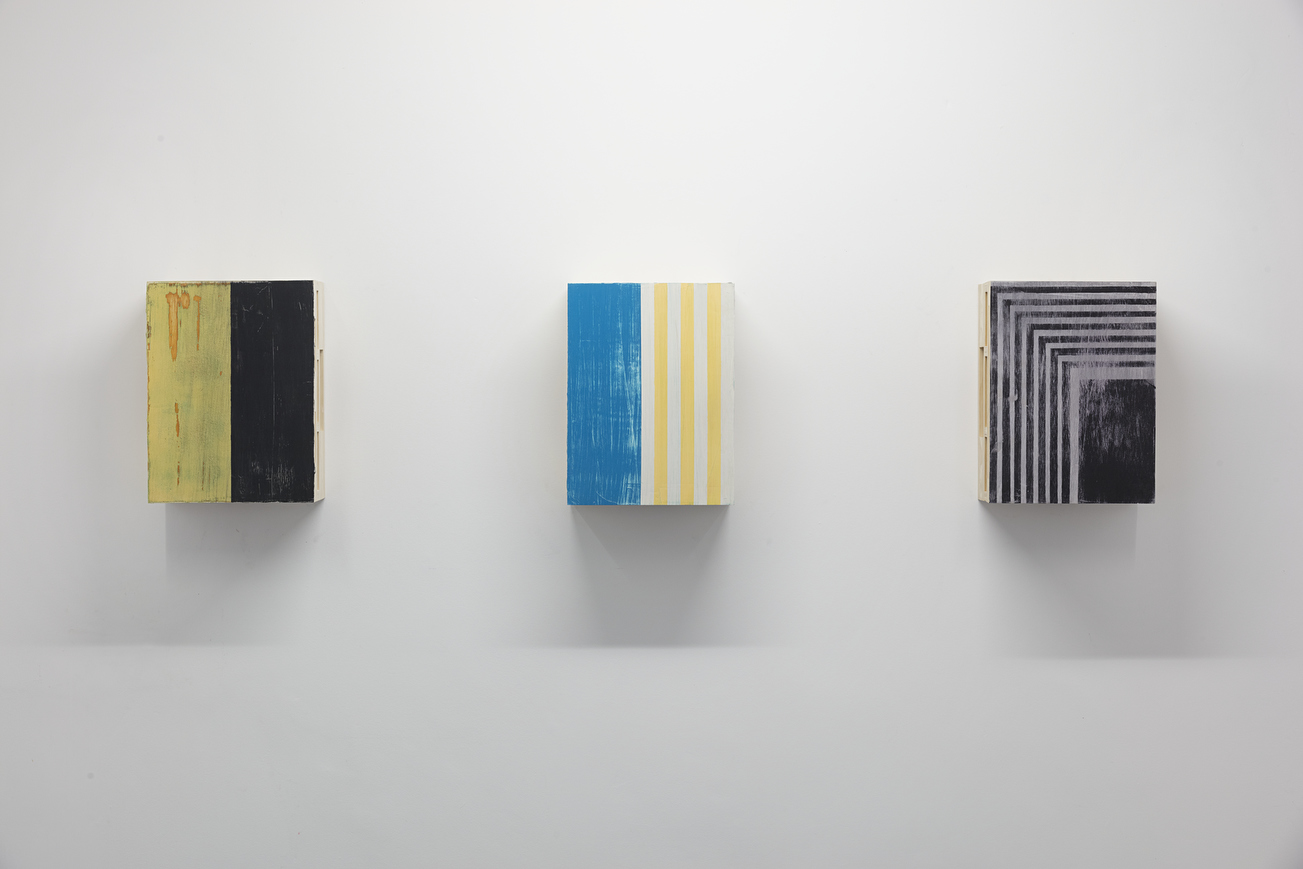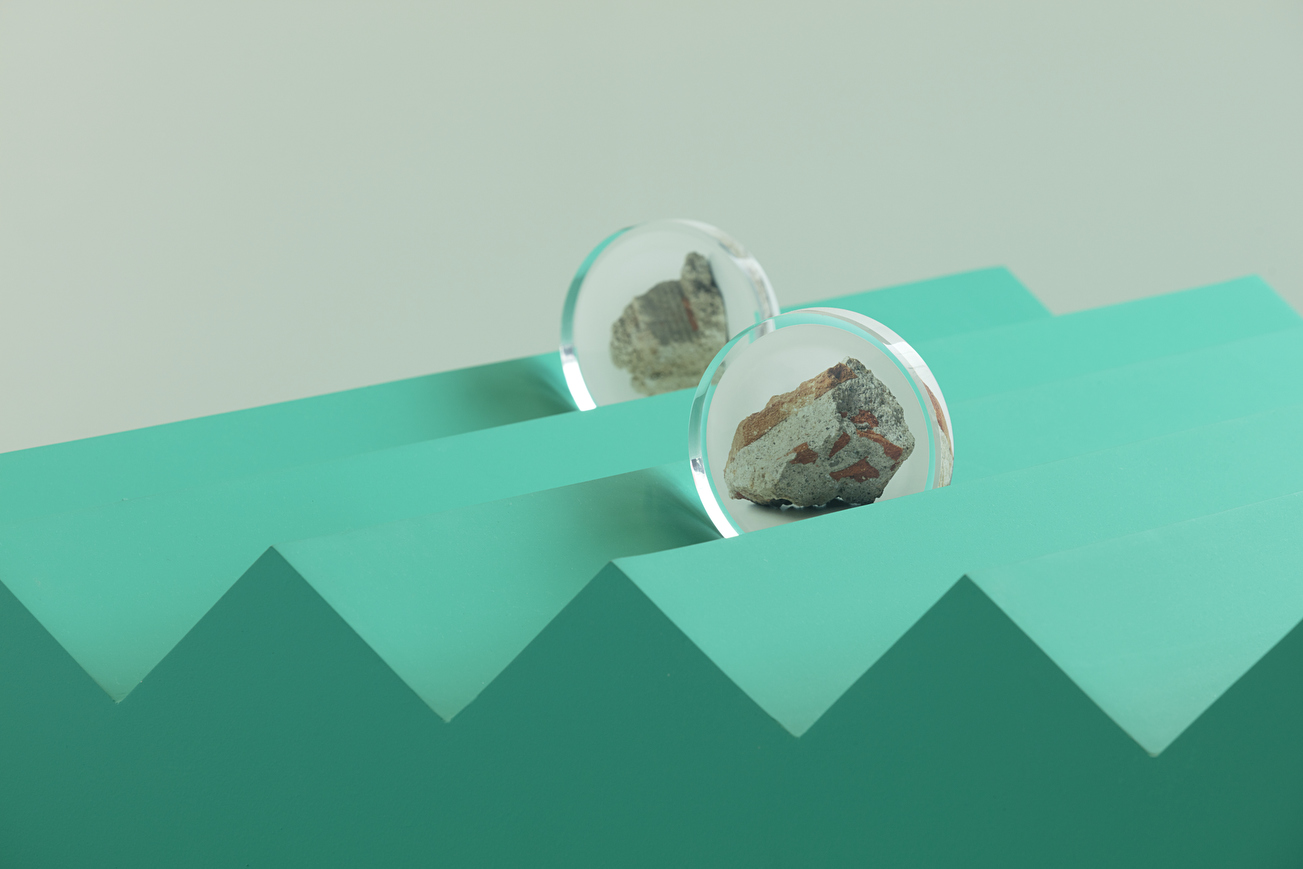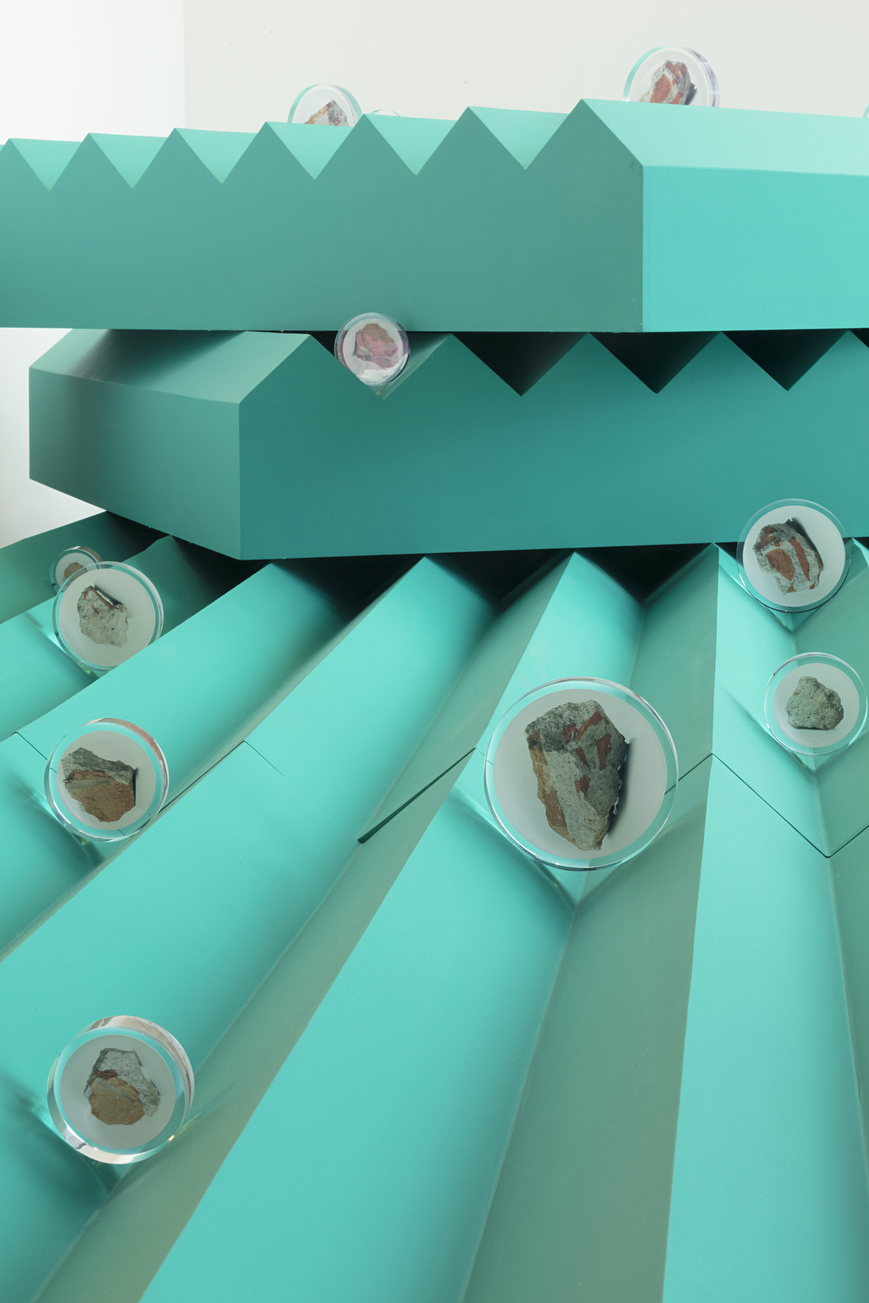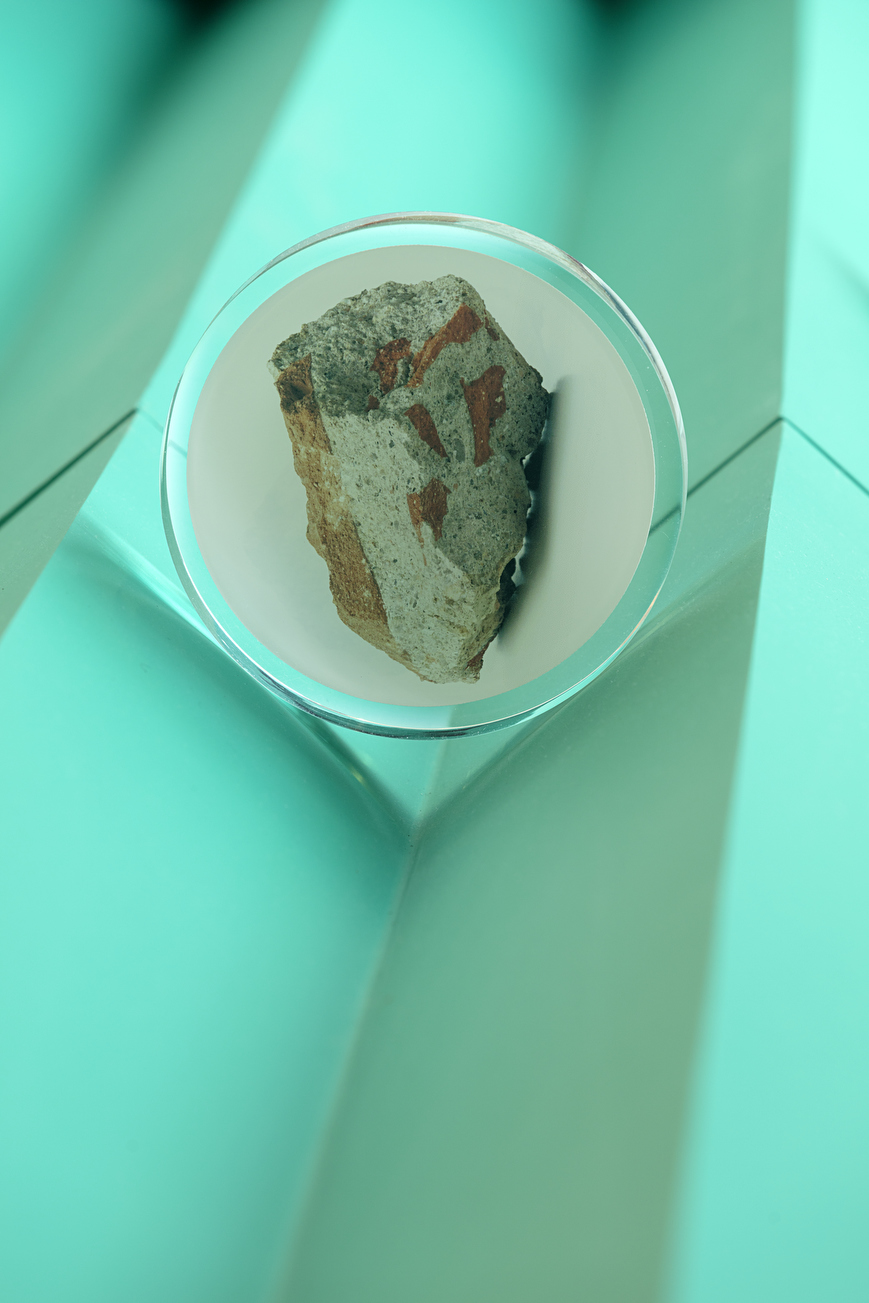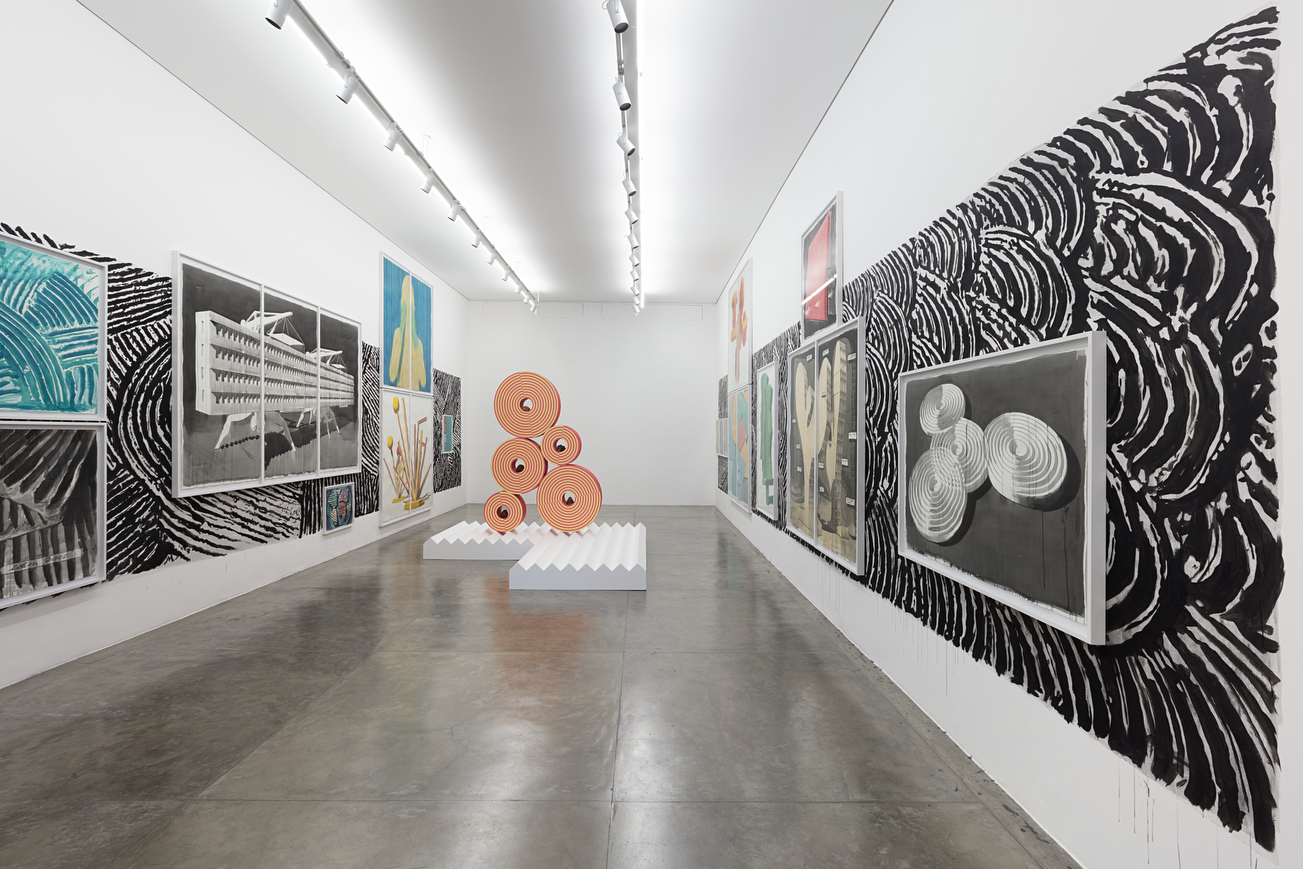Refazer
Nara Roesler Gallery / Sao Paulo
Photos: Everton Ballardin © Galeria Nara Roesler.
February 4th |Through March 18th, 2017
To do over. To start anew. To scorch the earth. The feeling is familiar in Brazil, just as in Cuba, Mexico and all of the Americas… The syndrome of the new and of the future, confirmed by the instantaneous forgetting of history for the sake of the next endeavor, the next big event, the revolution, the involution, the coup or the countercoup. Throughout the continent’s disconcerting biography, instant amnesia has been employed indistinctly by left- and right-wing, businessmen and populists, avant-garde architects and multinational corporation directors. Arrechea is determined to go down a different route in committing to the ethical and aesthetical new beginnings which preserve past memories. Hence his fixation on layers, stories, palimpsests, and atavistic memories. To do over, as the show’s title says – while never keeping the previous stages from transpiring, like in the setting up of his works, which involves a whole gamut of stacking and superimposition (drawing over wall, painting over object, cylinder over cylinder, artwork over artwork, word over drawing…).
Atavistic. In the strict sense, an ancestral heritage which manifests in descendants. In the broad sense, something someone recalls without even being aware they knew it, acquiredor accumulated memory which enraptures through uncontrollable associations and kinesthesia. At any rate, it is a key resource in the creation and perception of Arrechea’s work, present in the way a building’s architecture can evoke the entire imaginary of a people and of an epoch; it’s also at play in the way the steady rhythm of plowed lines in the field harks back to the cycles of labor and of the seasons; or in the kinesthetic associations with hardness or softness found in the graphic patterns of the artist’s watercolors.
Atavistic memories are particularly powerful when they happen involuntarily and head into directions that defy logic and causal thinking. Arrechea’s recent output seems to particularly rely on this possibility, since it’s less and less evocative of immediately recognizable icons and metaphors, and more and more immersed in the territory of free association of forms, gestures and ideas.
Hard or soft. The recurrent symbol of the parallel stripes (two-dimensional) and the zigzag edge (three-dimensional). Arbitrary, synthetic translation chosen by the artist for the plow lines in a field before a new crop is sown. A new beginning, a new layer which inherits the earth that the last harvest left behind. A condensed form which Arrechea reinvests with multiple associations and meanings. This broadening of meanings, however, doesn’t exactly involve textual and discourse-based statements. Rather, it springs from the multiplication of aesthetic approaches towards that recurrent symbol. The parallel lines can be flat or volumetric, hard or soft, two- or three-dimensional, pliable as clay or sharp as stainlesssteel knives. It’s somewhat like a musical theme played by instruments with assortedtimbres. Faced of this broadness, how can one tell the original representation apart from definitive one? It’s useless to even try. This constant transmutation is likeliest to serve as an example of the linguistic equivalence that Arrechea currently experiments with, or as an axis which allows him to exercise a wide range of pictorial gestures.*
Linguistic equivalence. It’s notable that despite all of the epistemological departures that were the legacy of the past century’s avant-gardes and neo-avant-gardes, contemporary art often perpetuates normative approaches to organizing knowledge which regard knowing and making as trees of successive levels where specialized boxes are laid out separately from one another. For Arrechea, on the other hand, language doesn’t seem to be arranged into a tree of hierarchies, but into a shared horizon of multiple and unpredictable permutations.
National histories co-inhabit that plane with personal memories, styles of painting, allegorical representations, graphic patterns, schematic drawings, chromatic compositions and so forth, with no distinguishable boundaries or edges in sight, at least for the moment. In that plane, therefore, any combination is plausible, to the extent that all elements are equivalent. The ultimate result of this equivalence would be the language of the absurd.
On another level, one can imagine that that implies a practice devoid of scripts or preset guides, one where any and all choice of language is extremely significant – since it is achoice in the full sense of the word, instead of a consequence of a tried and true way of making.
The absurdity. The lack of purpose, evolution, or development encountered by Sisyphus as he finds himself doomed to restart his climb every day. That which, according to Albert Camus, anyone can encounter in realizing how frail are the great promises that justify all the suffering and sacrifice of labor and civilization. The uselessness of every new beginning and every revolution. The absence of progress. And, precisely for that reason, the freedom experienced with the realization that the parameters for success that we yearned for weren’t anything but fiction, that development is a chimaera, that nothing exists except the climb repeated each day. The liberation of those who know the world is absurd and failures are preprogrammed. The autonomy of those who choose the history of those defeated because they don’t care about victory. The echo of the past that doesn’t need a triumphant return, because all it takes is for it to insinuate itself, delicate like an old childhood story half-remembered, as one tastes a rare food which no one barely cooks anymore.
*Considering the definitive character of watercolor technique, which doesn’t allow past brushstrokes to be erased or fully covered, it’s interesting to imagine the variations in the artist’s gesture, speed, and firmness from artwork to artwork, and the varying hardness of the lines.
Paulo Miyada / January 2017



